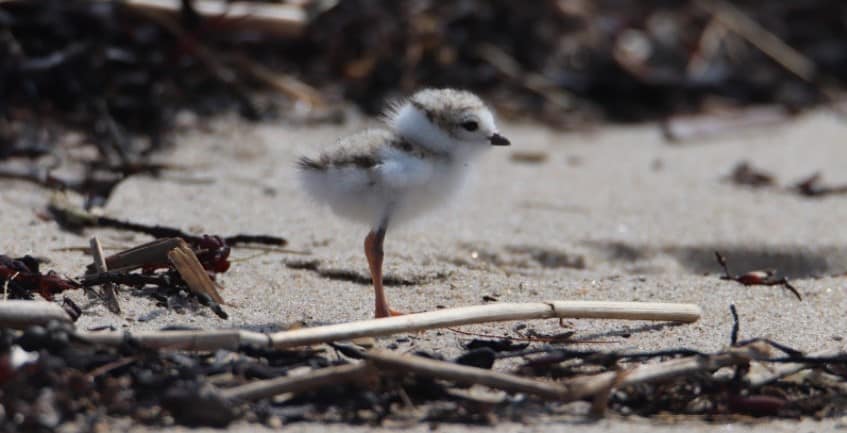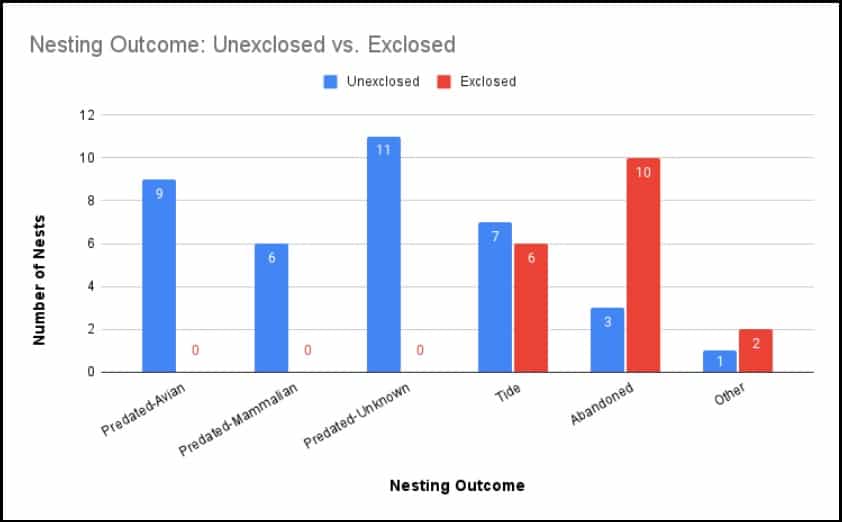
Somehow it’s August! The piping plover breeding season is beginning to wind down, birds are taking off from Maine beaches to migrate South for the winter, and Maine Audubon’s Coastal Bird Crew is breathing a little easier. 170 young birds fledged off of beaches from Georgetown to Ogunquit is no small feat for biologists from Maine Audubon, US Fish and Wildlife Service, and Maine Department of Inland Fisheries and Wildlife, who began closely monitoring a record-breaking number of 125 breeding pairs back in April.
Protecting critical nesting habitats, exclosing nests from predators (“exclosing” is when we install a protective cage around a nest that plovers can walk through but predators cannot), and implementing signage on beaches have proven essential to the recovery of this endangered species. The decision to exclose nests always requires careful consideration of many factors, including but not limited to predator loads, nest location, and the likelihood of abandonment by adult birds.

Out of 146 total nesting attempts this season, 91 nests successfully hatched, leaving 55 unsuccessful nests, primarily due to predation, flooding, or abandonment. Predation of unexclosed nests was the most common contributor to nest loss due to the various species that prey on plover eggs and adult birds. Crow and skunk tracks were often found at nest sites where eggs were predated. Likewise, foxes, coyotes, and larger raptors are known to target adult plovers.
Despite mother nature’s inherent challenges, our numbers of successfully hatched nests and fledged birds still have the potential to grow with a few young flightless chicks brooding on Biddeford, Scarborough, and Phippsburg beaches and our last active nest incubating in Phippsburg. We encourage people to continue to be aware of our signage indicating areas on the beach where chicks may be!
